Related Research Articles
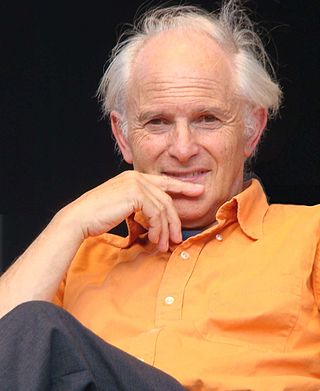
Sir Harold Walter Kroto, known as Harry Kroto, was an English chemist. He shared the 1996 Nobel Prize in Chemistry with Robert Curl and Richard Smalley for their discovery of fullerenes. He was the recipient of many other honors and awards.

Richard Errett Smalley was an American chemist who was the Gene and Norman Hackerman Professor of Chemistry, Physics, and Astronomy at Rice University. In 1996, along with Robert Curl, also a professor of chemistry at Rice, and Harold Kroto, a professor at the University of Sussex, he was awarded the Nobel Prize in Chemistry for the discovery of a new form of carbon, buckminsterfullerene, also known as buckyballs. He was an advocate of nanotechnology and its applications.

The Weizmann Institute of Science is a public research university in Rehovot, Israel, established in 1934, 14 years before the State of Israel. It differs from other Israeli universities in that it offers only postgraduate degrees in the natural and exact sciences.
The Faraday Society was a British society for the study of physical chemistry, founded in 1903 and named in honour of Michael Faraday. In 1980, it merged with several similar organisations, including the Chemical Society, the Royal Institute of Chemistry, and the Society for Analytical Chemistry to form the Royal Society of Chemistry which is both a learned society and a professional body. At that time, the Faraday Division became one of six units within the Royal Society of Chemistry.
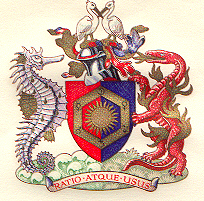
The Royal Institute of Chemistry was a British scientific organisation. Founded in 1877 as the Institute of Chemistry of Great Britain and Ireland (ICGBI), its role was to focus on qualifications and the professional status of chemists, and its aim was to ensure that consulting and analytical chemists were properly trained and qualified.
Naturally occurring neodymium (60Nd) is composed of 5 stable isotopes, 142Nd, 143Nd, 145Nd, 146Nd and 148Nd, with 142Nd being the most abundant (27.2% natural abundance), and 2 long-lived radioisotopes, 144Nd and 150Nd. In all, 33 radioisotopes of neodymium have been characterized up to now, with the most stable being naturally occurring isotopes 144Nd (alpha decay, a half-life (t1/2) of 2.29×1015 years) and 150Nd (double beta decay, t1/2 of 7×1018 years). All of the remaining radioactive isotopes have half-lives that are less than 12 days, and the majority of these have half-lives that are less than 70 seconds; the most stable artificial isotope is 147Nd with a half-life of 10.98 days. This element also has 13 known meta states with the most stable being 139mNd (t1/2 5.5 hours), 135mNd (t1/2 5.5 minutes) and 133m1Nd (t1/2 ~70 seconds).
Perchloryl fluoride is a reactive gas with the chemical formula ClO
3F. It has a characteristic sweet odor that resembles gasoline and kerosene. It is toxic and is a powerful oxidizing and fluorinating agent. It is the acid fluoride of perchloric acid.
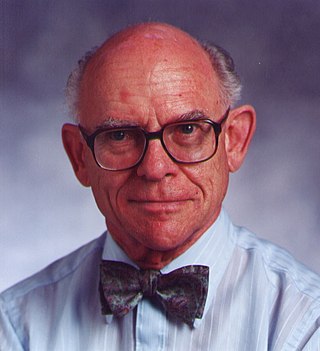
Frank Albert Cotton FRS was an American chemist. He was the W.T. Doherty-Welch Foundation Chair and Distinguished Professor of Chemistry at Texas A&M University. He authored over 1600 scientific articles. Cotton was recognized for his research on the chemistry of the transition metals.

The Aberjona River is a 9.3-mile-long (15.0 km), heavily urbanized river in the northwestern suburbs of Boston, Massachusetts. The name is from the Natick language and means "junction or confluence".
Fred Basolo was an American inorganic chemist. He received his Ph.D. at the University of Illinois at Urbana-Champaign in 1943, under Prof. John C. Bailar, Jr. Basolo spent his professional career at Northwestern University. He was a prolific contributor to the fields of coordination chemistry, organometallic, and bioinorganic chemistry, publishing over 400 papers. He supervised many Ph.D. students. With colleague Ralph Pearson, he co-authored the influential monograph "Mechanisms of Inorganic Reactions", which illuminated the importance of mechanisms involving coordination compounds. This work, which integrated concepts from ligand field theory and physical organic chemistry, signaled a shift from a highly descriptive nature of coordination chemistry to a more quantitative science.
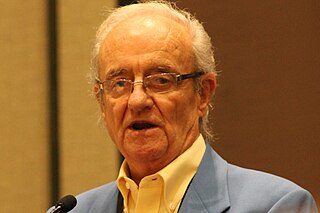
Roland A. Hemond was an American professional baseball executive who worked in Major League Baseball. He served as the scouting director of the California Angels, general manager of the Chicago White Sox and Baltimore Orioles, senior executive vice president of the Arizona Diamondbacks, executive advisor to the general manager of the White Sox, and special assistant to the president for the Arizona Diamondbacks.
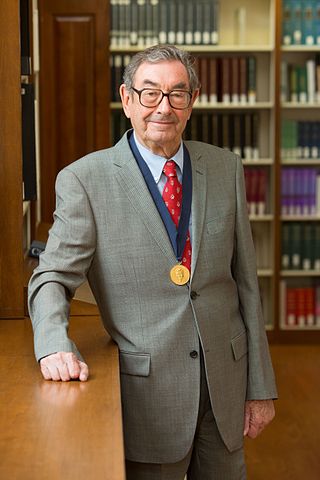
Harry Barkus Gray is the Arnold O. Beckman Professor of Chemistry at California Institute of Technology.
Harry George Drickamer, born Harold George Weidenthal, was a pioneer experimentalist in high-pressure studies of condensed matter. His work generally concerned understanding the electronic properties of matter.
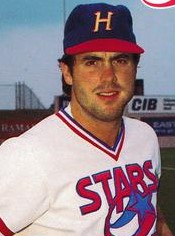
Scott Mathew Hemond is an American former professional baseball catcher. He played in Major League Baseball (MLB) from 1989-1995 for the Oakland Athletics, Chicago White Sox, and St. Louis Cardinals.
Harry F. Noller is an American biochemist, and since 1992 the director of the University of California, Santa Cruz's Center for the Molecular Biology of RNA. He has made significant contributions to our understanding of the ribosome and is a member of the National Academy of Sciences.

The American Institute of Chemists Gold Medal is the highest award of the American Institute of Chemists and has been awarded since 1926.
Hemond is a surname. Notable people with the surname include:

Benjamin List is a German chemist who is one of the directors of the Max Planck Institute for Coal Research and professor of organic chemistry at the University of Cologne. He co-developed organocatalysis, a method of accelerating chemical reactions and making them more efficient. He shared the 2021 Nobel Prize in Chemistry with David MacMillan "for the development of asymmetric organocatalysis".
References
- 1 2 "Harry F. Hemond". mit.edu. Retrieved April 26, 2017.